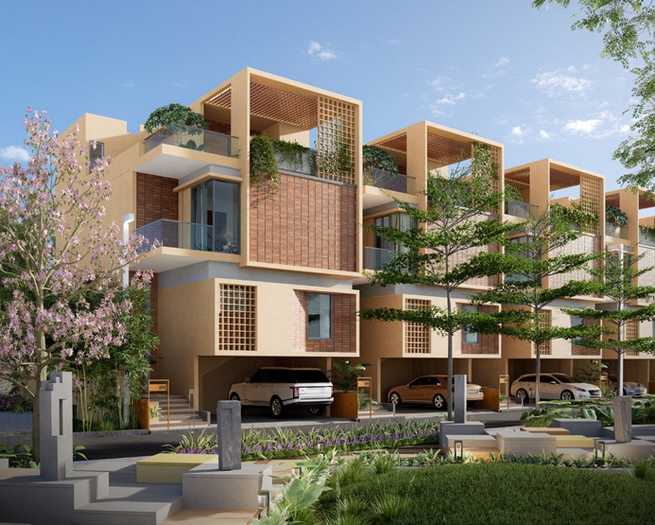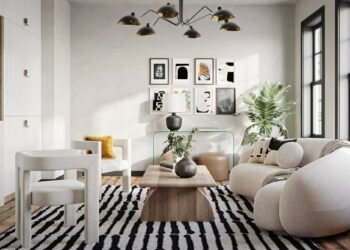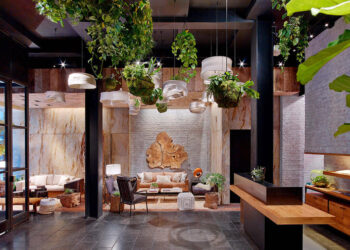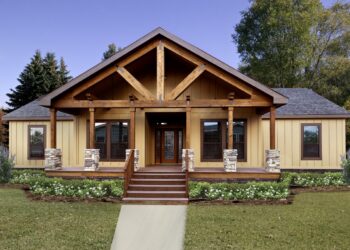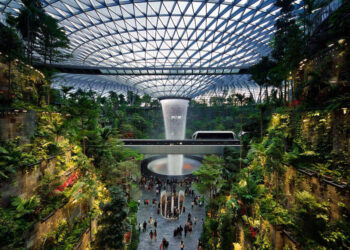The Modern Urban Challenge
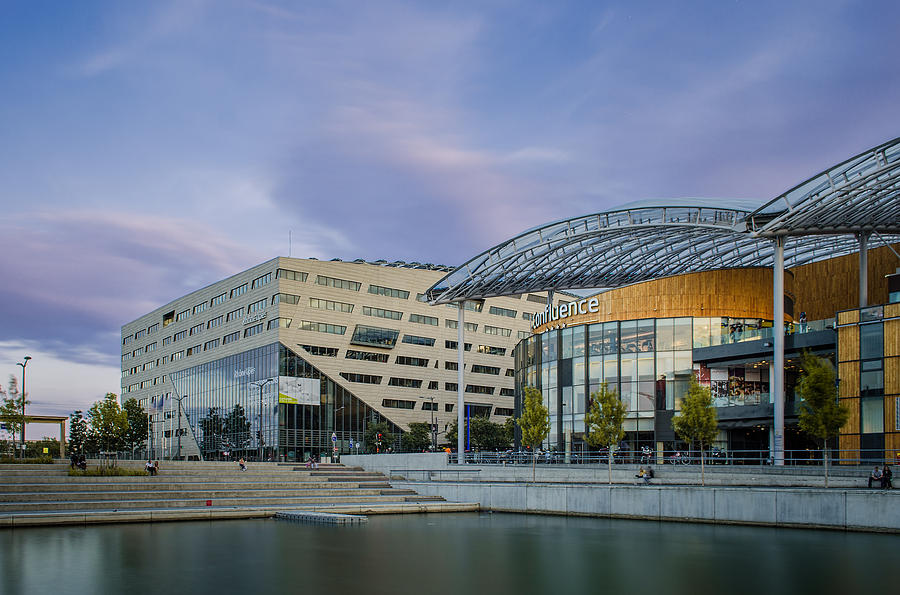
The inherent nature of urban living, while offering unparalleled convenience and opportunity, presents unique challenges to personal well-being. Understanding these pressures is crucial to appreciating why the pursuit of serenity in city homes has become a paramount design objective.
A. Sensory Overload:
A. Visual Clutter: City environments are often dense with visual distractions—billboards, traffic, crowded streets, and towering buildings. This constant visual stimulation can lead to mental fatigue and stress.
B. Auditory Assault: Urban noise pollution, from traffic and construction to sirens and loud conversations, is a pervasive issue. Chronic exposure to high noise levels can impair sleep, increase stress, and negatively impact cognitive function.
C. Artificial Lighting: Reliance on artificial light, especially at night, disrupts natural circadian rhythms, affecting sleep quality and overall health. Urban areas are often characterized by light pollution, making it difficult to experience true darkness.
B. Limited Space and Density:
A. Smaller Footprints: Urban dwellings, particularly apartments and condos, often come with smaller square footage compared to suburban or rural homes. This necessitates efficient design and prevents excessive accumulation of belongings.
B. Proximity to Neighbors: High-density living means closer proximity to neighbors, leading to potential issues with privacy and shared noise.
C. Lack of Green Space: Many urban residents have limited access to private outdoor areas or public green spaces, which are crucial for mental restoration and physical activity.
C. High-Stress Lifestyles:
A. Demanding Work Schedules: Urban professionals often face demanding jobs, long hours, and high-pressure environments, leaving little time or energy for relaxation.
B. Constant Connectivity: The pervasive nature of digital communication means many individuals are “always on,” blurring the lines between work and personal life and preventing true downtime.
C. Commuting Stress: Daily commutes in congested urban areas contribute significantly to stress levels, impacting overall well-being before and after the workday.
D. The Digital Divide with Nature:
A. Disconnection from Natural Cycles: Modern urban environments often disconnect individuals from natural light cycles, fresh air, and the presence of living organisms. This can lead to a “nature deficit” that impacts mood and cognitive function.
B. Lack of Biophilic Elements: Traditional urban residential design often neglects the human innate need to connect with nature, leading to sterile and uninspiring interiors.
Crafting Tranquility in Urban Dwellings
Creating a serene urban dwelling is a deliberate design endeavor, focused on mitigating external stressors and enhancing internal well-being. These principles transcend mere decoration, aiming to fundamentally transform the experience of living in the city.
A. Sensory Management
Intentionally controlling and optimizing the sensory inputs within the home is paramount to achieving calm.
A. Visual Calm:
A. Minimalism as a Foundation: Embracing principles of minimalism by decluttering, focusing on clean lines, and ensuring uncluttered surfaces. This reduces visual noise and allows the eye to rest.
B. Muted Color Palettes: Utilizing calming neutral tones (whites, grays, soft blues, earthy greens) as a base, which reflect light and create a sense of expansiveness and calm. Accent colors are used sparingly and thoughtfully.
C. Thoughtful Object Curation: Every item in the home should be intentionally chosen for its beauty, functionality, or sentimental value, avoiding excessive ornamentation. “Less is more” is a guiding principle.
D. Strategic Views: Framing desirable views (e.g., a distant park, a piece of sky, a well-curated indoor garden) while screening undesirable ones (e.g., a noisy street, a neighboring building) through clever window treatments or interior elements.
B. Auditory Sanctuary:
A. Soundproofing and Insulation: Investing in high-quality windows (double or triple glazing), well-insulated walls, and solid-core doors to minimize external noise penetration.
B. Acoustic Absorption: Incorporating soft furnishings like thick rugs, heavy curtains, upholstered furniture, and acoustic panels to absorb internal echoes and reduce reverberation, creating a quieter atmosphere.
C. White Noise/Nature Sounds: Utilizing sound machines or smart speakers to play gentle white noise, ambient music, or calming nature sounds (e.g., gentle rain, distant waves) to mask unavoidable external noises.
C. Lighting for Well-being:
A. Maximized Natural Light: Prioritizing large windows, strategic window placement, and open floor plans to allow abundant daylight to flood the space, regulating circadian rhythms and boosting mood.
B. Layered Artificial Lighting: Implementing multiple layers of artificial light (ambient, task, accent) with dimming capabilities to create varied moods and cater to different activities. Warm color temperatures (2700K-3000K) are favored for evening relaxation.
C. Circadian Lighting Systems: Advanced smart lighting that automatically adjusts its color temperature and brightness throughout the day to mimic natural sunlight, supporting healthy sleep patterns and daytime alertness.
D. Glare Control: Using sheer curtains, blinds, or smart glass to control harsh glare while still allowing natural light to enter.
B. Spatial Optimization and Flow
Making the most of limited urban square footage while fostering a sense of openness and ease.
A. Open-Concept Living: Designing fluid transitions between living, dining, and kitchen areas to create a sense of spaciousness and allow light to penetrate deeper into the home.
B. Smart Storage Solutions: Implementing extensive built-in cabinetry, custom shelving, hidden storage compartments, and multi-functional furniture to keep clutter out of sight. Every item has a designated place.
C. Multi-Functional Furniture: Opting for pieces that serve multiple purposes, such as an ottoman with storage, a sofa bed, or a dining table that can extend.
D. Vertical Space Utilization: Utilizing vertical space with tall shelving, wall-mounted units, and even vertical gardens to maximize storage and display opportunities without taking up floor space.
E. Clear Pathways: Ensuring unobstructed circulation paths to promote smooth movement and a feeling of ease within the home.
C. Connection to Nature (Biophilia)
Actively integrating natural elements to foster a deeper connection to the living world, even in a dense urban setting.
A. Indoor Plants: Incorporating a variety of indoor plants, from small desk plants to large floor plants. Plants improve air quality, add natural beauty, and have a calming psychological effect. Consider living walls for dramatic impact in small spaces.
B. Natural Materials: Using materials like wood (light tones often preferred for brightness), stone, linen, cotton, and wool. Their natural textures and imperfections add warmth and authenticity.
C. Views of Nature (Where Possible): Designing to frame any available views of trees, sky, or distant green spaces. Even a small balcony garden can provide a vital visual connection.
D. Water Features: Small indoor fountains or tabletop water features can provide soothing sounds and a visual connection to nature.
E. Nature-Inspired Art: Displaying artwork that depicts natural landscapes, flora, or abstract interpretations of natural forms and patterns.
F. Fresh Air and Ventilation: Ensuring good air circulation through operable windows (if external air quality permits), or investing in high-quality air filtration systems and energy recovery ventilators (ERVs) to bring in fresh, filtered air.
D. Personalization and Routine
Creating spaces that resonate deeply with the individual’s needs and support daily routines that promote calm.
A. Dedicated Zones: Even in small homes, carving out small dedicated areas for specific activities – a reading nook, a meditation corner, a mini-gym space, or a dedicated workstation – helps compartmentalize life and reduce mental clutter.
B. Comfort and Tactility: Focusing on soft furnishings, comfortable seating, and inviting textures that encourage relaxation and provide sensory comfort.
C. Personal Sanctuary Elements: Incorporating items that hold personal meaning or evoke a sense of calm – cherished books, photos, a specific scent diffuser, or comfortable throws.
D. Supporting Daily Routine: Designing spaces that facilitate calming routines, such as a well-lit corner for morning coffee, a serene bathroom for evening wind-downs, or a yoga mat always ready.
Tangible Benefits of Serene Urban Dwellings
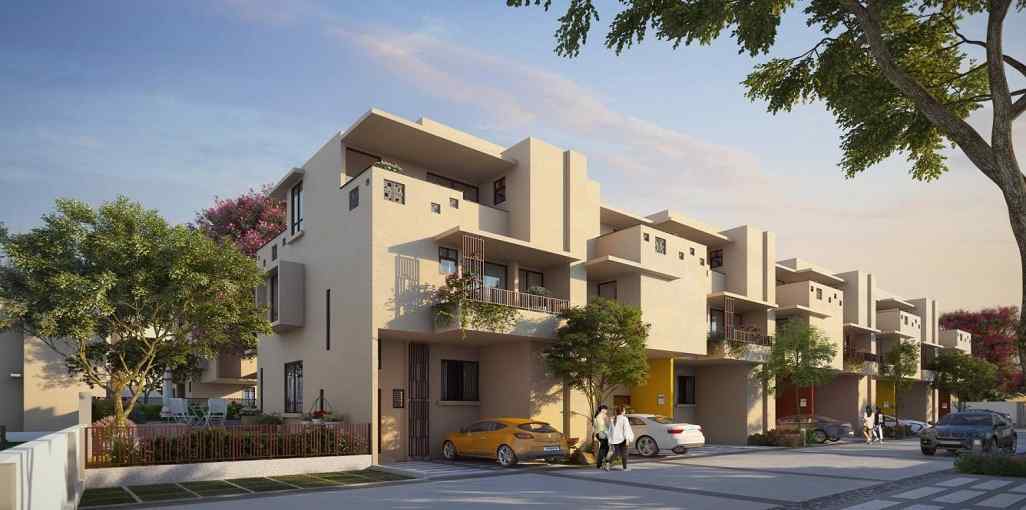
The investment in designing for urban serenity yields a wide array of profound benefits for occupants, extending beyond mere comfort to fundamental well-being and productivity.
A. Enhanced Mental and Emotional Well-being
A. Reduced Stress and Anxiety: A calm, uncluttered environment significantly lowers stress hormones, promoting relaxation and reducing feelings of being overwhelmed.
B. Improved Mood: Natural light, fresh air, and biophilic elements contribute to a more positive emotional state, combating urban-induced fatigue and irritability.
C. Greater Focus and Clarity: By minimizing distractions and visual noise, a serene space allows for better concentration, whether for work, reading, or simply quiet reflection.
D. Better Sleep Quality: Optimized lighting (especially circadian-friendly systems) and reduced noise pollution create an ideal environment for restful sleep, crucial for physical and mental restoration.
E. Increased Mindfulness: A peaceful environment encourages presence and awareness, helping individuals slow down and engage in mindful activities.
B. Improved Physical Health
A. Better Indoor Air Quality: Non-toxic materials, good ventilation, and indoor plants contribute to cleaner air, reducing respiratory issues and allergies often exacerbated in urban environments.
B. Reduced Noise-Related Health Issues: Effective soundproofing mitigates the negative health impacts of chronic noise exposure, such as increased blood pressure and heart rate.
C. Support for Active Lifestyles: Dedicated spaces for exercise (even a small yoga mat area) and proximity to nature (if designed for) can encourage physical activity.
C. Optimized Productivity and Creativity
A. Enhanced Cognitive Performance: A serene environment allows the brain to function more efficiently, leading to improved memory, problem-solving skills, and decision-making.
B. Boosted Creativity: Uncluttered spaces and connections to nature have been linked to increased divergent thinking and innovative ideas.
C. Reduced Distractions: Minimizing visual and auditory clutter ensures less interruption, allowing for deeper engagement with tasks, whether professional or personal.
D. Practical and Economic Advantages
A. Increased Property Value: Well-designed, tranquil, and efficient urban dwellings are highly desirable and can command a premium in competitive real estate markets.
B. Energy Efficiency: Maximizing natural light and incorporating good insulation reduces reliance on artificial lighting, heating, and cooling, leading to lower utility bills.
C. Sustainable Choices: The minimalist approach often encourages choosing fewer, higher-quality, durable items, reducing waste and promoting sustainable consumption patterns.
D. Space Maximization: Intelligent storage and multi-functional designs make even small urban homes feel larger and more usable, adding perceived value.
E. Social and Relational Benefits
A. Enhanced Hospitality: A calm and welcoming home environment is more conducive to hosting guests, fostering deeper social connections.
B. Improved Family Dynamics: Less clutter and sensory overload can reduce friction in shared living spaces, leading to more harmonious family interactions.
C. Personal Reflection: Provides a dedicated space for introspection, fostering self-awareness and personal growth.
Practical Design Strategies
Transforming an urban dwelling into a serene sanctuary involves thoughtful planning and strategic interventions across various design elements.
A. Pre-Design Considerations
A. Needs Assessment: Identify specific pain points (e.g., too noisy, too cluttered, lack of natural light) and desired outcomes (e.g., meditation space, better sleep, guest readiness).
B. Lifestyle Audit: Analyze daily routines and habits to understand how the space needs to support specific activities and rituals for calm.
C. Budget Allocation: Prioritize investments based on impact, focusing on soundproofing and natural light first, then storage and aesthetic elements.
B. Architectural and Structural Interventions
A. Window Upgrades: Install high-quality double or triple-pane windows with low-E coatings to significantly reduce noise and improve thermal insulation. Consider laminated glass for added sound dampening.
B. Insulation: Enhance wall and ceiling insulation to further block external noise and regulate indoor temperature.
C. Layout Optimization: For renovations, consider open-concept layouts where appropriate, or conversely, create dedicated, enclosed “retreat” zones for quiet work or relaxation.
D. Entryway Transition: Design a clear transition zone at the entrance to shed urban external elements (shoes, coats, keys, bags) before entering the main living space.
C. Interior Design and Furnishings
A. Decluttering and Organization: Ruthlessly eliminate unnecessary items. Implement a robust organizational system (drawers, cabinets, baskets) to keep surfaces clear. Regular decluttering rituals are key.
B. Furniture Selection: Choose furniture with clean lines, simple forms, and natural materials. Opt for fewer, well-chosen, comfortable pieces over many decorative ones. Ensure furniture size is appropriate for the scale of the room.
C. Color Palette: Stick to a base of calming neutrals (whites, off-whites, warm grays, light wood tones). Introduce subtle greens, blues, or warm earth tones through soft furnishings or art.
D. Texture for Warmth: Introduce richness through varied textures – a chunky knit throw, a woven rug, a smooth wooden table, a soft linen sofa. This adds depth without visual clutter.
E. Lighting Design:
A. Layered Lighting: Combine overhead ambient light (often recessed), task lighting (reading lamps, under-cabinet lights), and accent lighting (spotlights on art) with dimmers.
B. Warm Light Temperature: Use bulbs with a color temperature of 2700K-3000K, especially for evening lighting, to promote relaxation.
C. Automated Blinds/Curtains: For privacy and light control, automated systems can adjust based on time of day or light sensors.
D. Biophilic and Sensory Elements
A. Indoor Plants: Integrate a variety of easy-to-care-for indoor plants. Consider larger plants as focal points or smaller clusters for texture. Vertical gardens are excellent for small spaces.
B. Natural Materials: Incorporate wood (flooring, furniture, accents), stone (countertops, decorative elements), and natural fibers in textiles (linen, cotton, wool).
C. Water Features: A small, quiet tabletop fountain or a larger, integrated water feature can provide soothing sounds.
D. Acoustic Treatments: Use thick rugs, heavy curtains, upholstered furniture, and potentially discreet acoustic wall panels to absorb sound. Consider white noise machines for bedrooms or focus areas.
E. Scent Management: Use natural essential oil diffusers with calming scents (lavender, cedarwood, citrus) or subtle candles. Ensure good ventilation to prevent stale odors.
E. Technology Integration (Thoughtful and Discreet)
A. Smart Lighting Systems: Allow for precise control of light intensity and color temperature, and enable automated “scenes” for relaxation.
B. Smart Thermostats: Maintain optimal temperature and humidity for comfort and energy efficiency.
C. Air Quality Monitors/Purifiers: Automatically clean the air and provide real-time data on indoor air quality.
D. Discreet Integration: Hide wires, recess speakers, and choose tech devices that blend seamlessly into the design rather than standing out. Smart hubs can be concealed.
Challenges and Considerations in Creating Urban Serenity
While the benefits are clear, the path to a serene urban dwelling can present its own set of considerations.
A. Budget Constraints: High-quality soundproofing, custom built-ins, and sustainable materials can be a significant investment. Prioritization and phased implementation are key.
B. Existing Building Limitations: Older urban buildings might have structural limitations for extensive renovations (e.g., adding large windows, altering floor plans).
C. Over-Minimalism: The risk of creating a space that feels too cold or impersonal if not balanced with warmth, texture, and personal touches.
D. Maintenance of Natural Elements: Live plants and some natural materials require ongoing care and cleaning to maintain their aesthetic and health benefits.
E. Digital Discipline: Even with a serene physical space, maintaining mental calm requires conscious digital habits (e.g., putting away phones, limiting screen time in certain zones).
F. Family Needs: Designing for serenity in a home with children or multiple occupants requires creative solutions for shared spaces and individual retreats.
G. Finding Skilled Professionals: Sourcing designers and contractors with expertise in biophilic, minimalist, and acoustically conscious design can be challenging.
The Future of Urban Sanctuaries
The quest for serenity in urban dwellings is an evolving journey, leading towards even more integrated, responsive, and holistic approaches to design.
A. Regenerative Interiors
A. Air-Purifying Walls: Advanced living walls or biowalls that actively filter a significant volume of indoor air, going beyond simple aesthetic appeal.
B. Self-Regulating Environments: Smart systems that autonomously adjust multiple environmental parameters (temperature, humidity, light, sound, scent) based on real-time data and occupant needs, without manual intervention.
C. Integrated Vertical Farming: Small-scale indoor hydroponic or aeroponic systems for growing fresh produce, fostering a connection to food sources and reducing environmental impact.
B. Hyper-Personalized Wellness Spaces
A. Biometric Feedback Integration: Homes that passively monitor occupant biometrics (e.g., heart rate, sleep patterns, stress levels) and use AI to suggest or implement environmental adjustments for optimal well-being.
B. Adaptive Sensory Experiences: Spaces that dynamically change their visual, auditory, and olfactory profiles to match desired moods or activities (e.g., a “focus mode” that dims lights and plays alpha waves).
C. Therapeutic Lighting: Advanced lighting systems that use specific light spectrums to address seasonal affective disorder (SAD), improve mood, or enhance cognitive function.
C. Blurring Indoor and Outdoor Boundaries
A. Seamless Transitions: Greater use of retractable glass walls, large sliding doors, and consistent flooring materials to effortlessly connect indoor living areas with private outdoor spaces (balconies, patios, rooftops), regardless of size.
B. Vertical Parks: Integration of multi-story green spaces directly into building facades and interiors, creating micro-climates and visual connections to nature for many residents.
C. Shared Urban Green Oases: Development of more communal rooftop gardens, internal courtyards, and vertical parks within urban residential complexes, providing accessible green spaces for all residents.
D. Sustainable Minimalism
A. Zero-Waste Living Integration: Designing homes that actively support zero-waste lifestyles through integrated composting systems, efficient recycling sorting, and minimal consumption pathways.
B. Material Transparency: Increased demand for complete transparency on the lifecycle and environmental impact of all materials used in home construction and furnishing.
C. Modular and Adaptable Systems: Furniture and built-in components that are easily reconfigurable, repairable, and reusable, supporting a circular economy within the home.
Conclusion
The pursuit of serenity in urban dwellings is a testament to the enduring human need for peace and connection, even amidst the most stimulating environments. It’s a design philosophy that elevates the home from a mere functional space to a powerful tool for well-being. By consciously orchestrating sensory inputs, optimizing spatial efficiency, embracing nature, and fostering personalization, urban homes can indeed become the tranquil sanctuaries we deeply crave. This evolution promises not just more beautiful living spaces, but fundamentally healthier, happier, and more harmonious lives for city dwellers globally.

